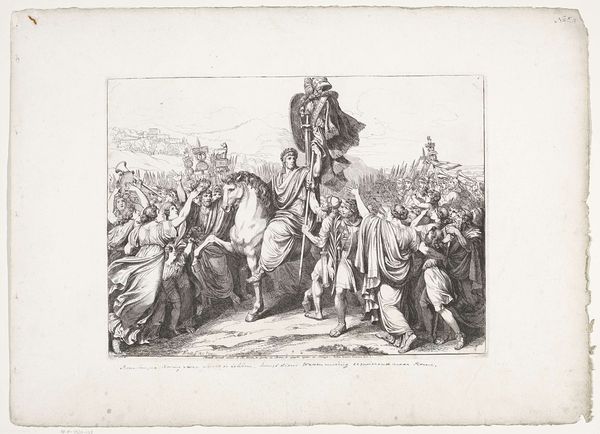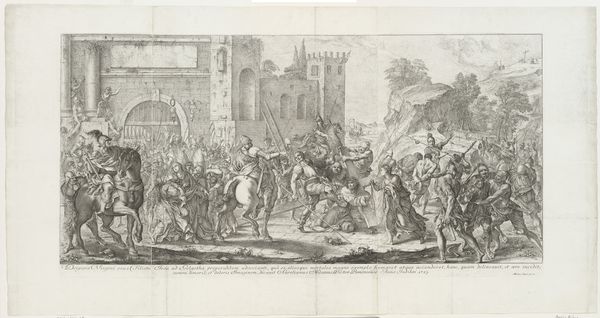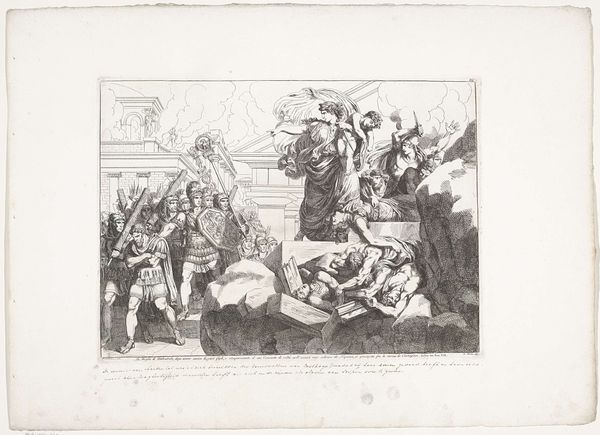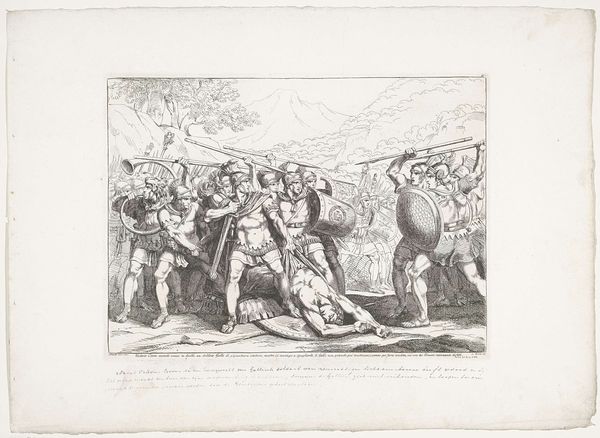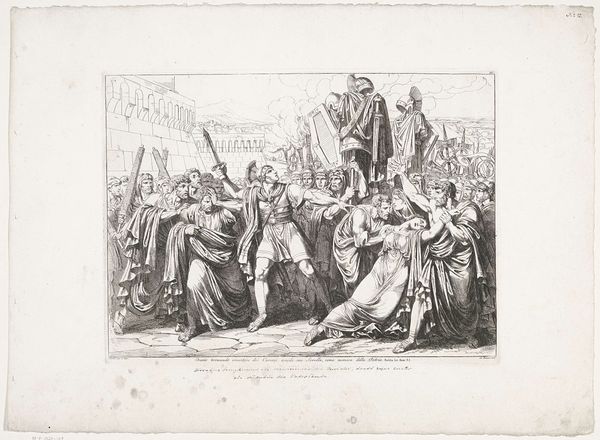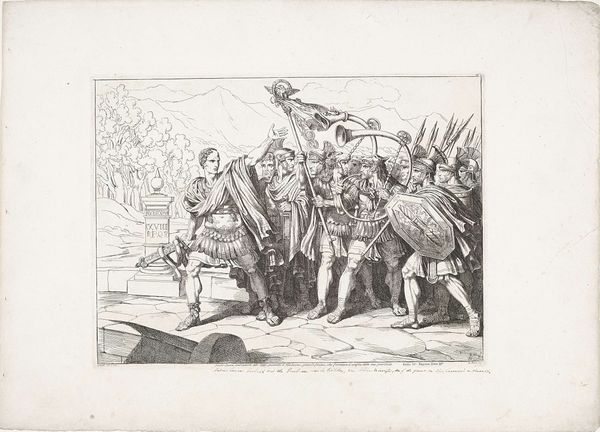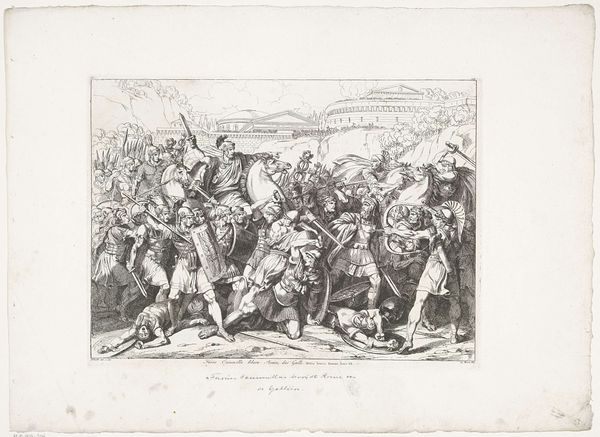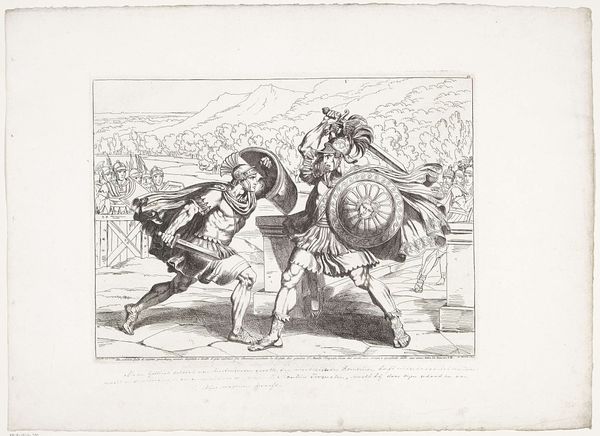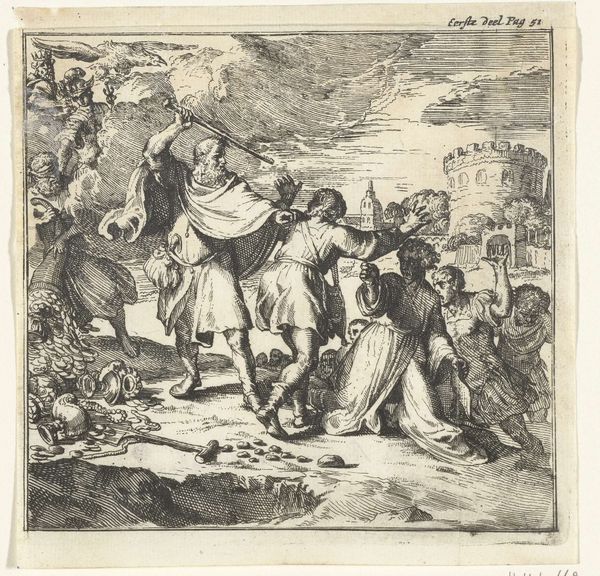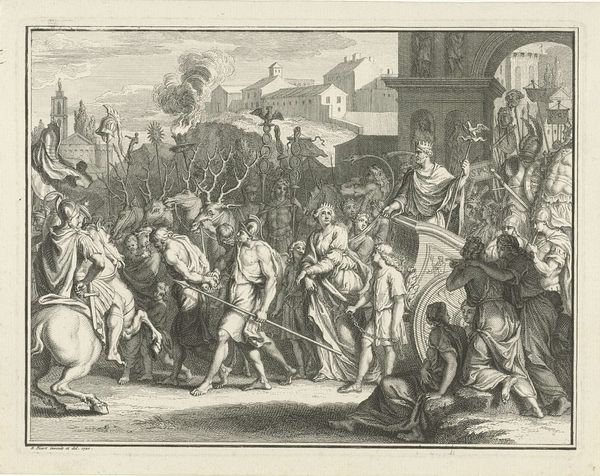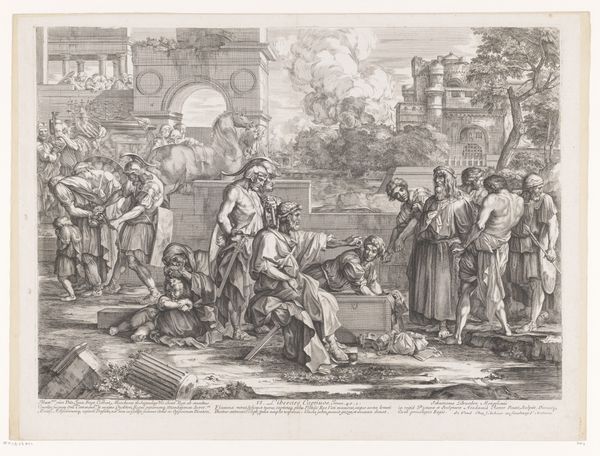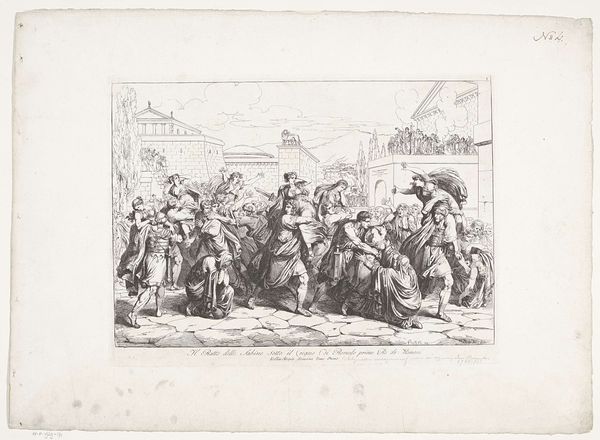
print, etching, engraving
#
neoclacissism
#
narrative-art
# print
#
etching
#
landscape
#
figuration
#
history-painting
#
engraving
Dimensions: height 320 mm, width 432 mm
Copyright: Rijks Museum: Open Domain
Curator: The print before us, dating back to 1818, is entitled "The Sacrifice of Marcus Curtius," created by Bartolomeo Pinelli. Editor: My first impression is, wow, intense drama! It’s this crazy mix of clarity and chaos. A lone warrior, a city on edge, fire… and that classical architectural backdrop gives it all such gravity. It's operatic, almost a graphic novel version of a historical myth. Curator: That inherent tension you’re picking up on speaks volumes. The imagery here aligns with Neoclassical principles, echoing ideals of heroism, sacrifice, and civic duty popular at the time. The architectural elements certainly emphasize Rome's grandeur. But look at how Pinelli departs from strict Neoclassical ideals through his use of the looser engraving technique to create this etching; what we gain is dynamic energy, a rawness rarely seen. Editor: That controlled chaos, the deliberate sketchiness – it makes it so much more relatable, strangely. Makes me think about all the mythic stories and their modern retelling: is it sacrifice when there is someone there watching it, when there's someone keeping note of your great behavior? Curator: Exactly! In iconographic terms, consider the symbolic load—the horse representing martial power and courage, the chasm and fire as both threat and cleansing force, a test and then an answer. Marcus Curtius is a symbol here for civic virtue prevailing against societal crises, jumping into an abyss as sacrifice for the salvation of Rome. It is almost operatic! Editor: Well, someone tell him to maybe get off the horse first. (laughs) Seriously though, beyond the spectacle, this image feels very grounded in a certain cultural memory. The landscape isn’t just background; it's integral. Those stark white buildings become silent witnesses to an ancient drama—making you ponder, 'What truths do our societies still uphold in sacrifice? And what new, different abysses are we facing?' Curator: What do we risk losing to avoid change, right? What pillars might actually be holding us back? Ultimately, I appreciate Pinelli's ability to give symbolic and universal meaning to this moment in history. Editor: Yes! It definitely hits differently knowing the broader strokes. An echo of valor, questioning everything under a deceptively orderly surface... Pretty effective stuff!
Comments
No comments
Be the first to comment and join the conversation on the ultimate creative platform.
